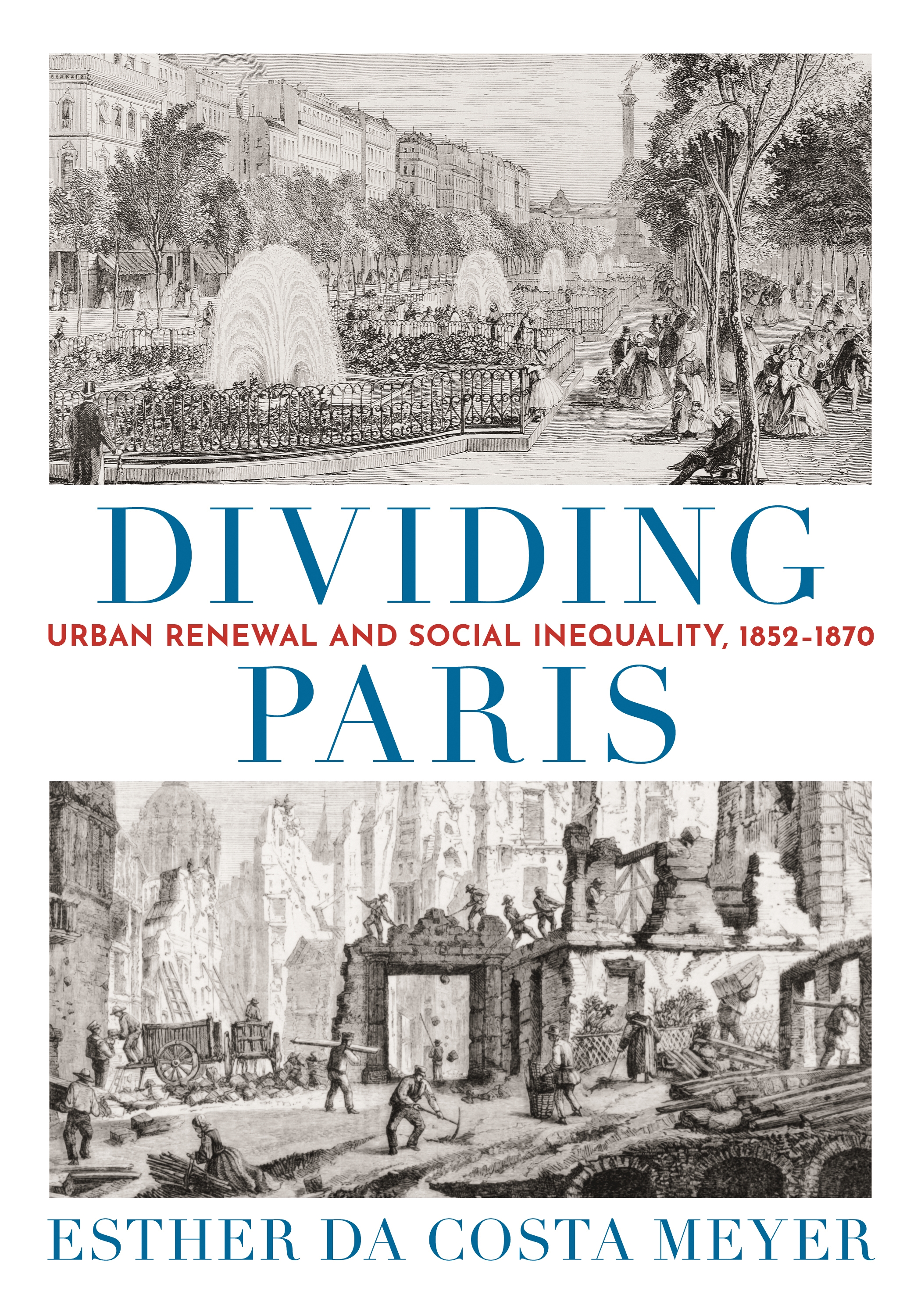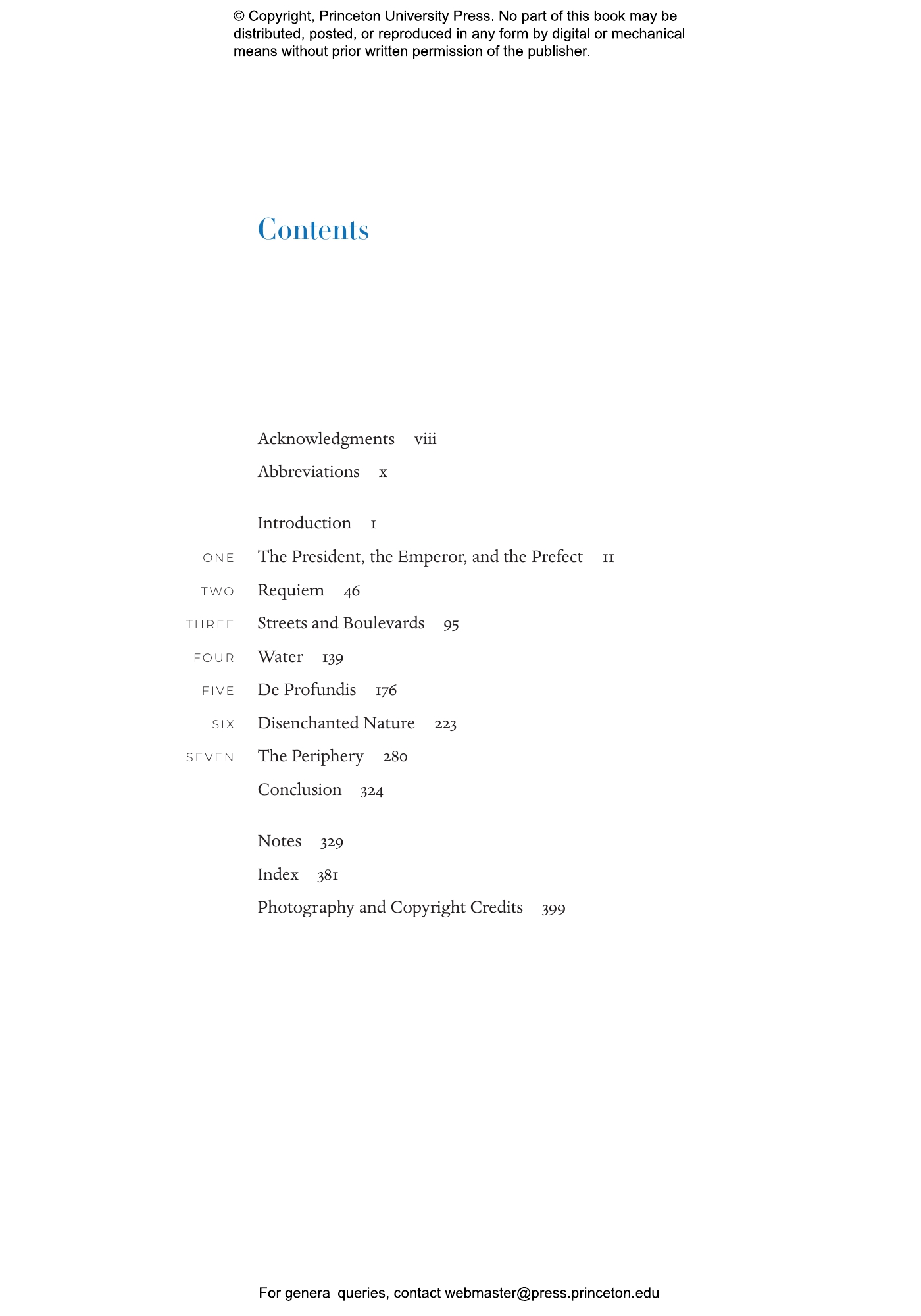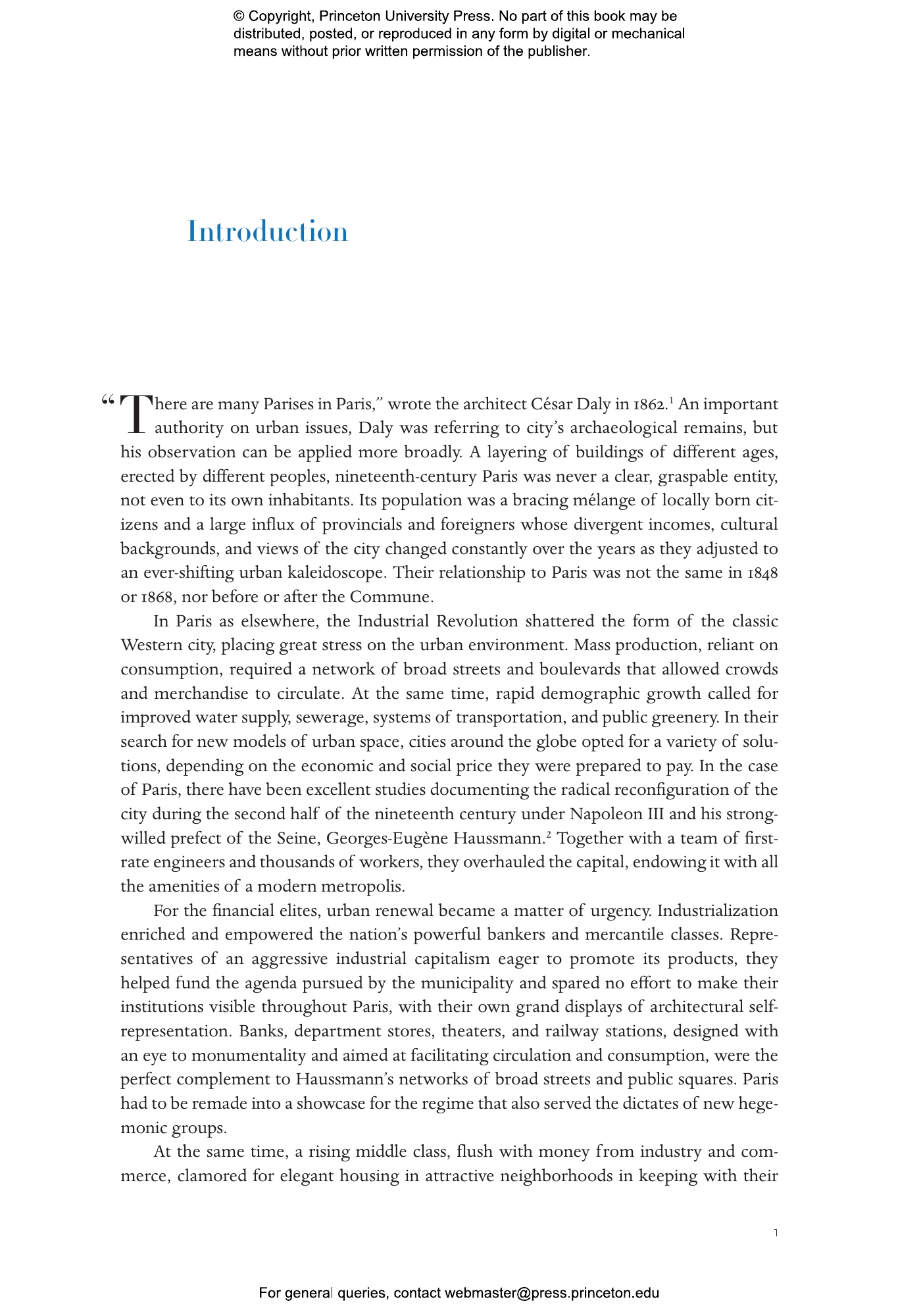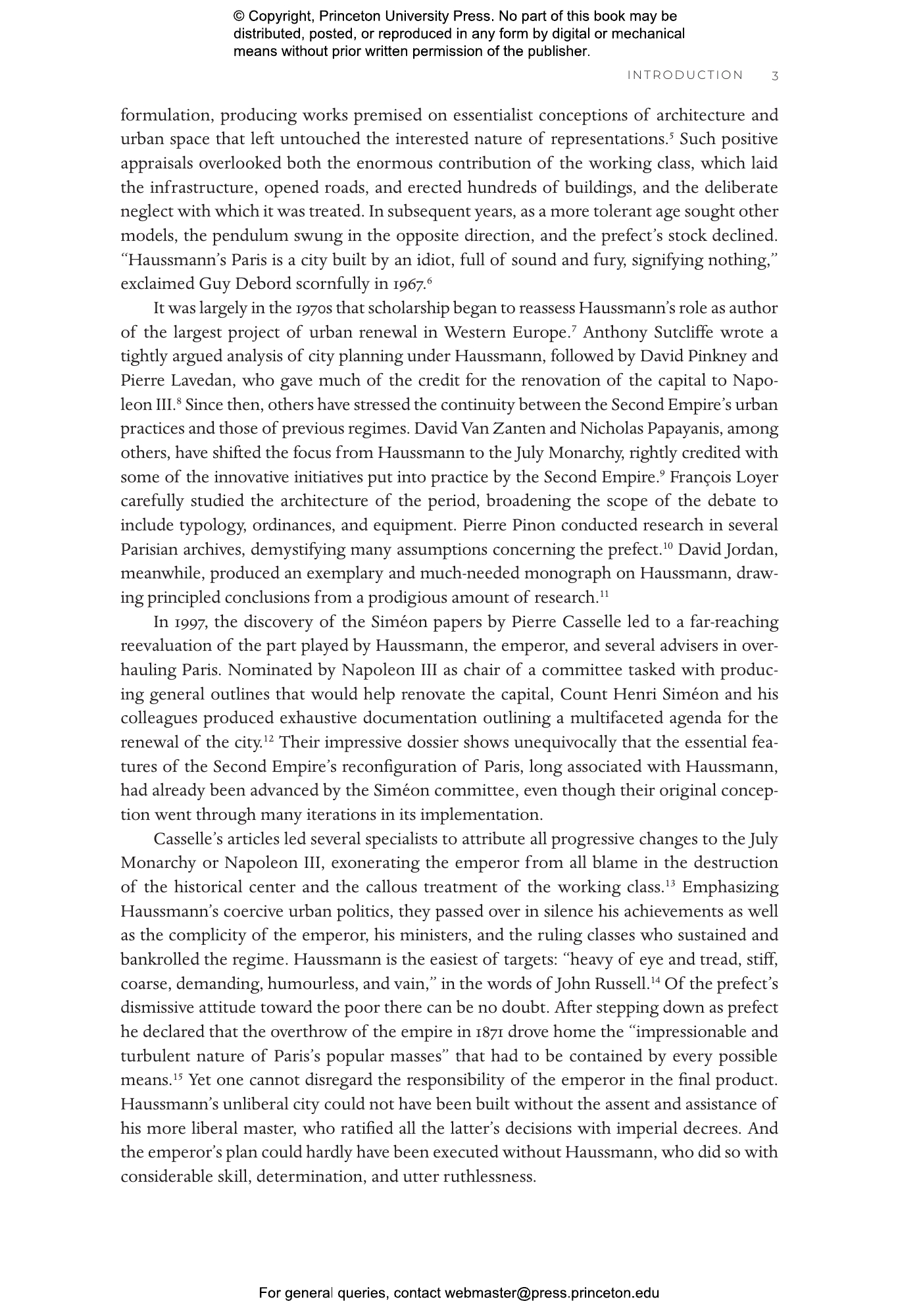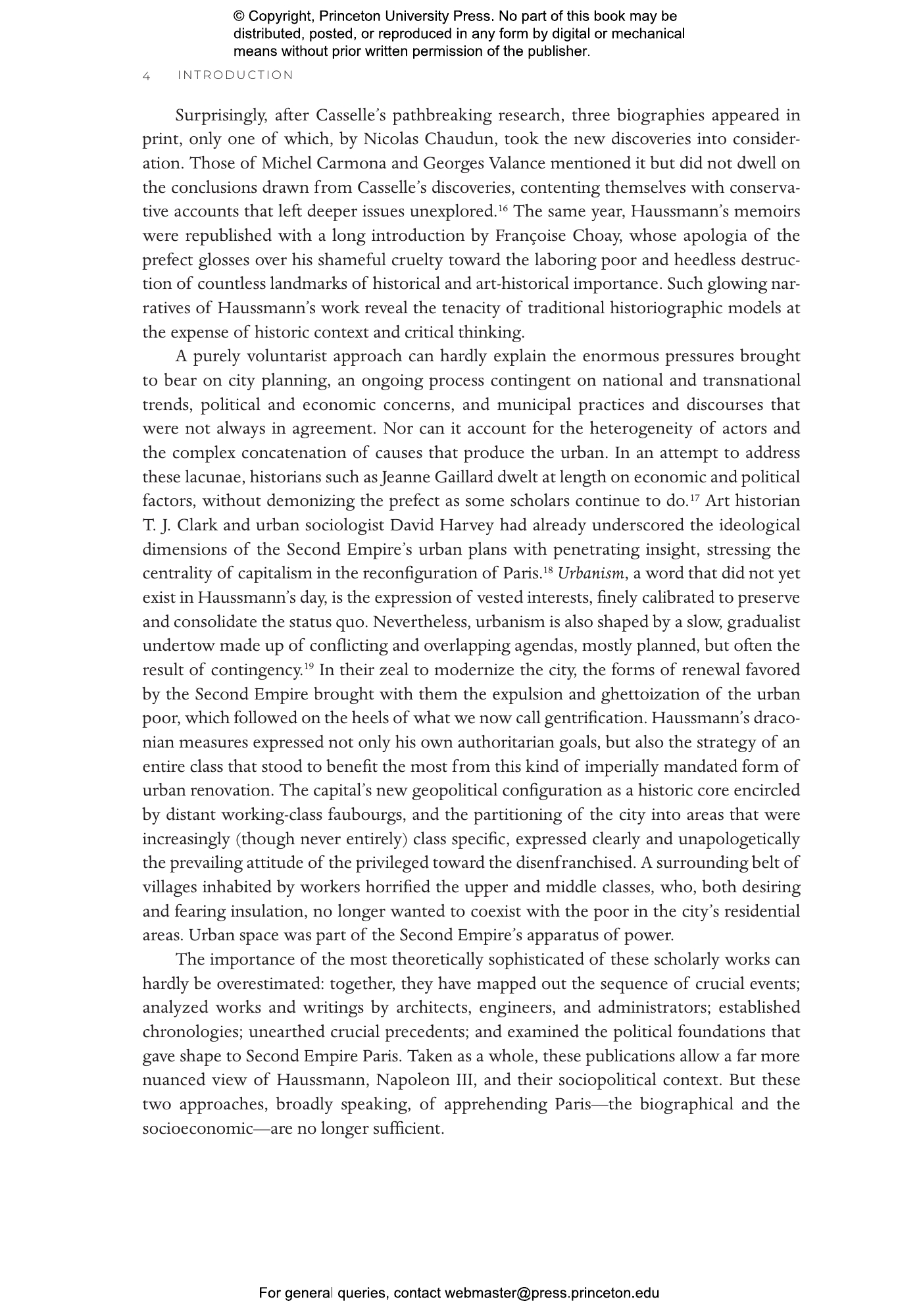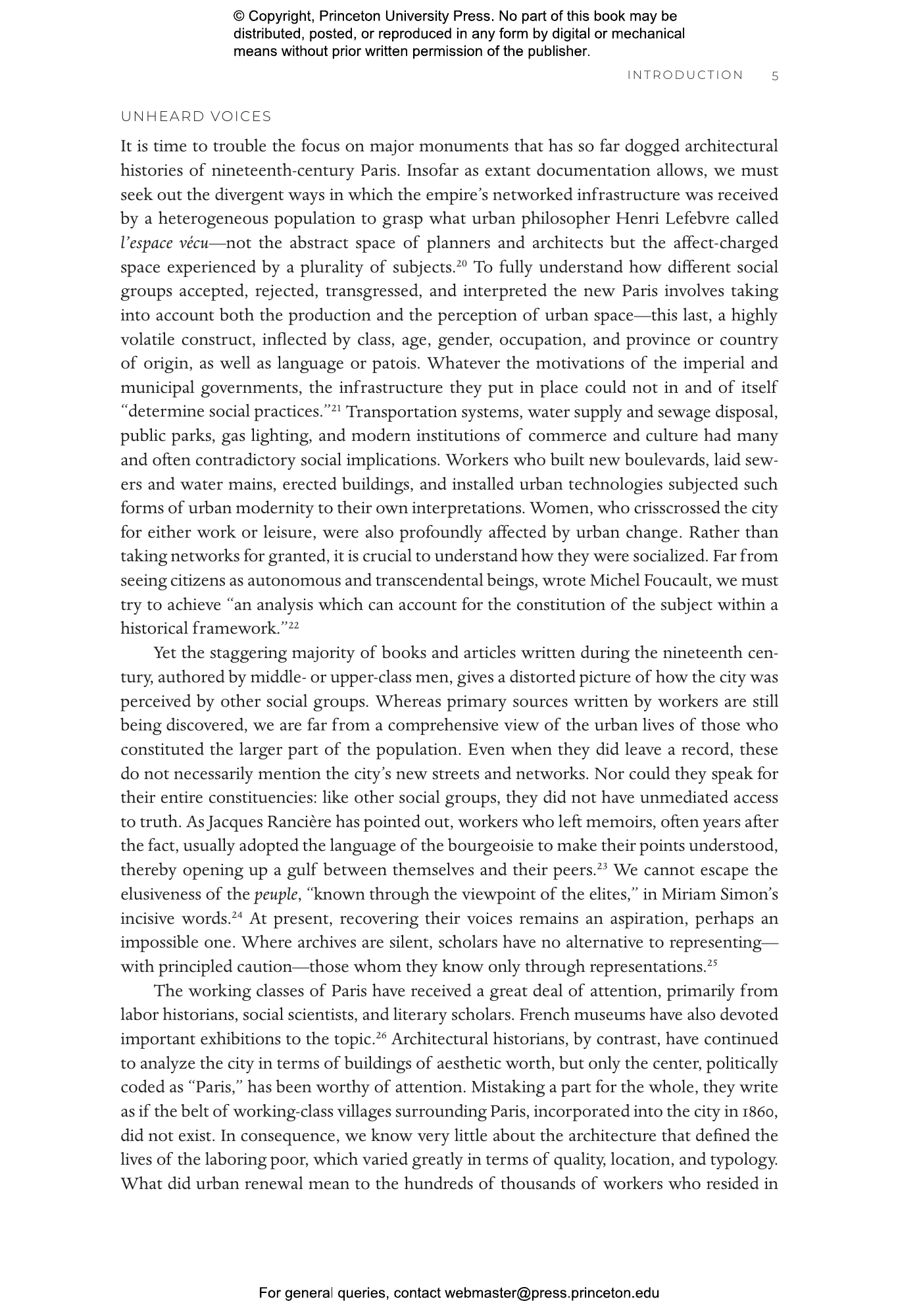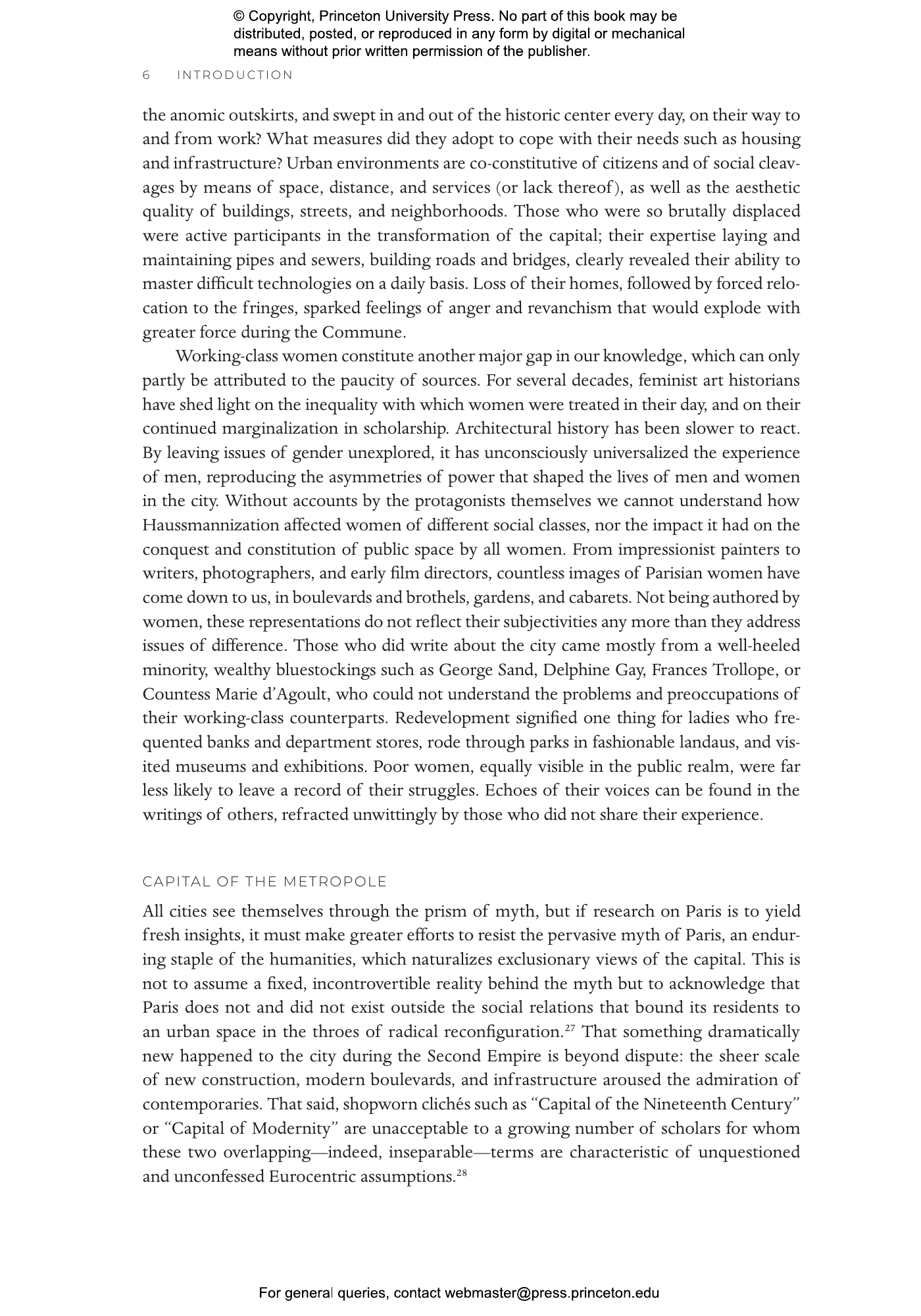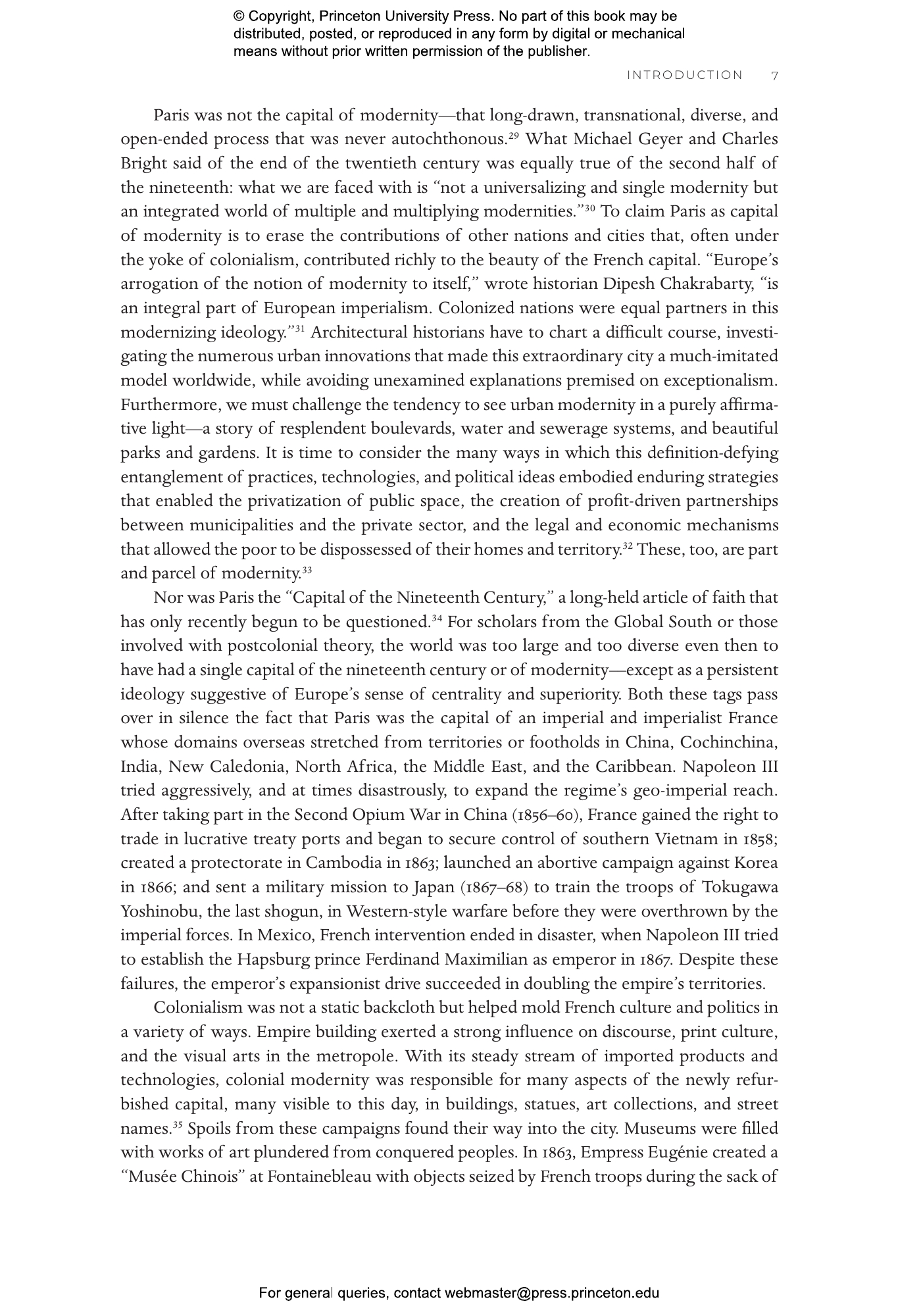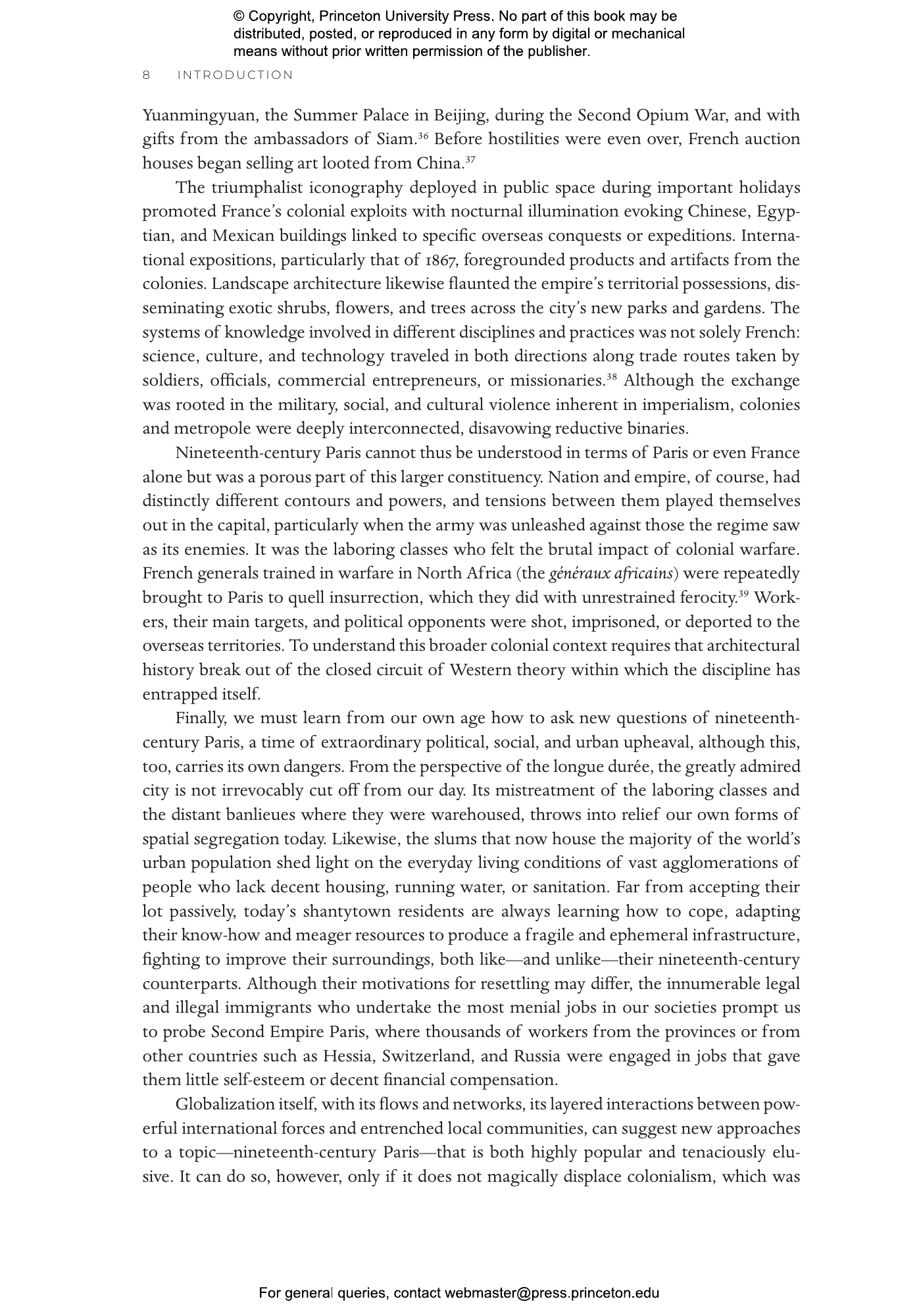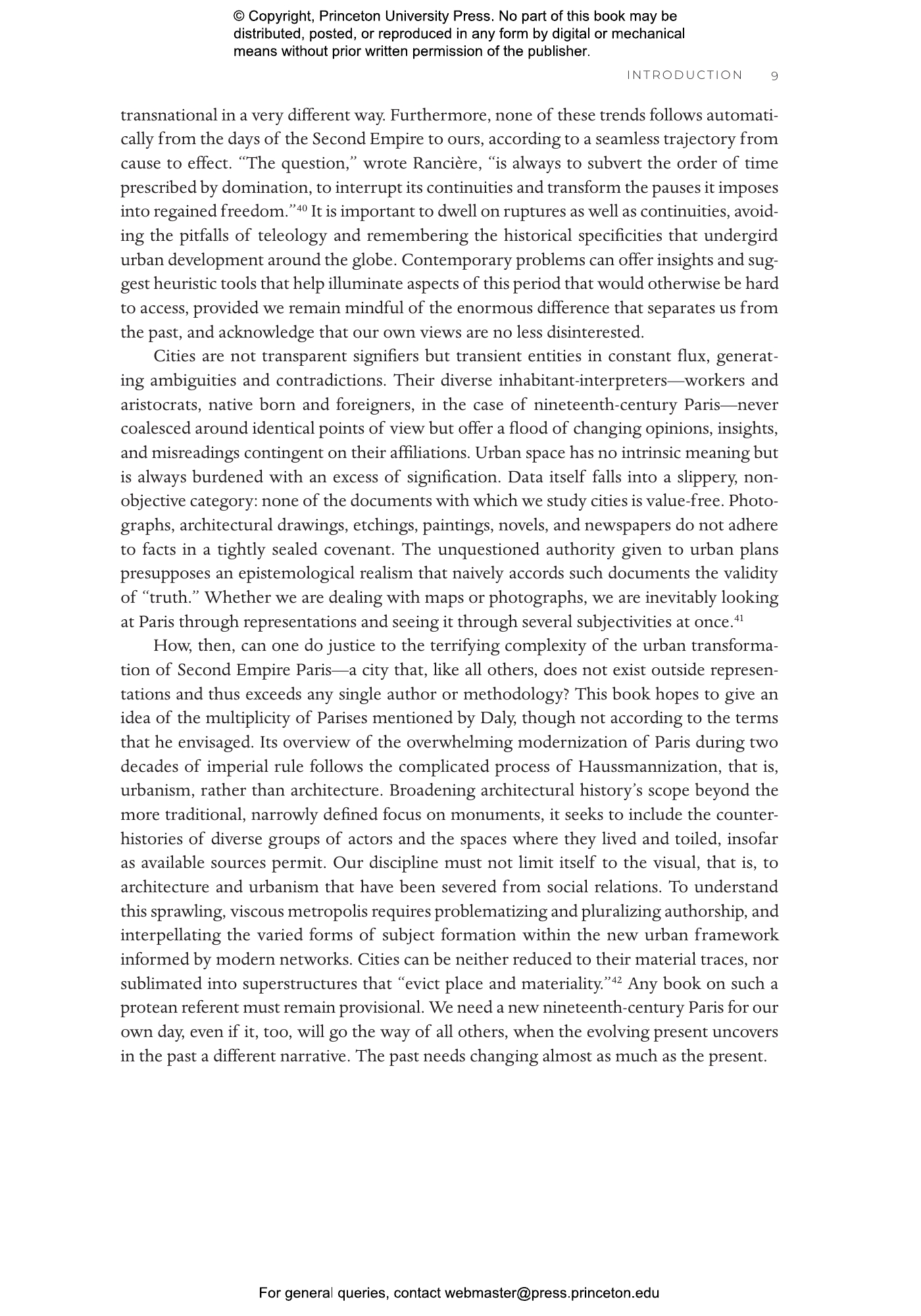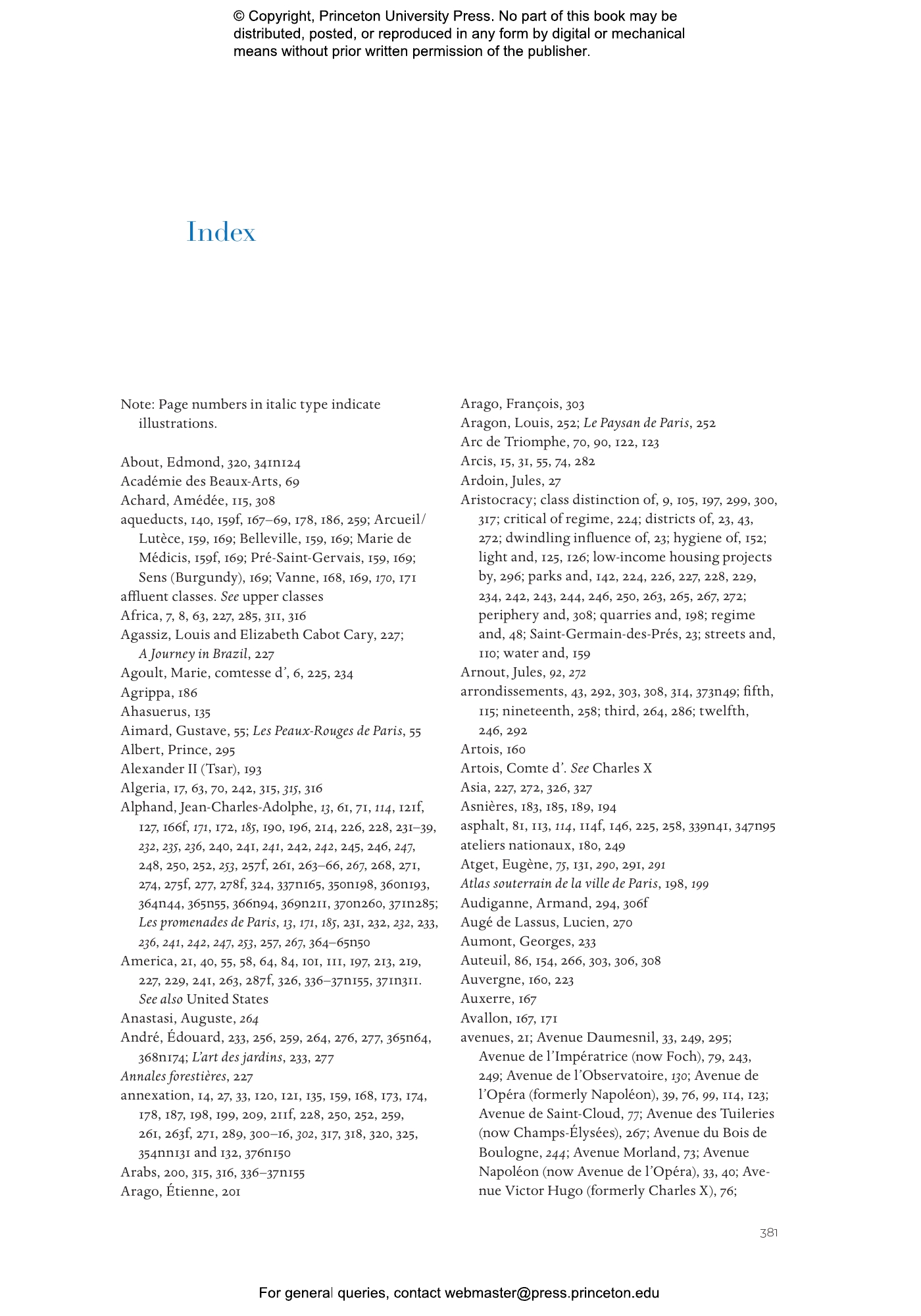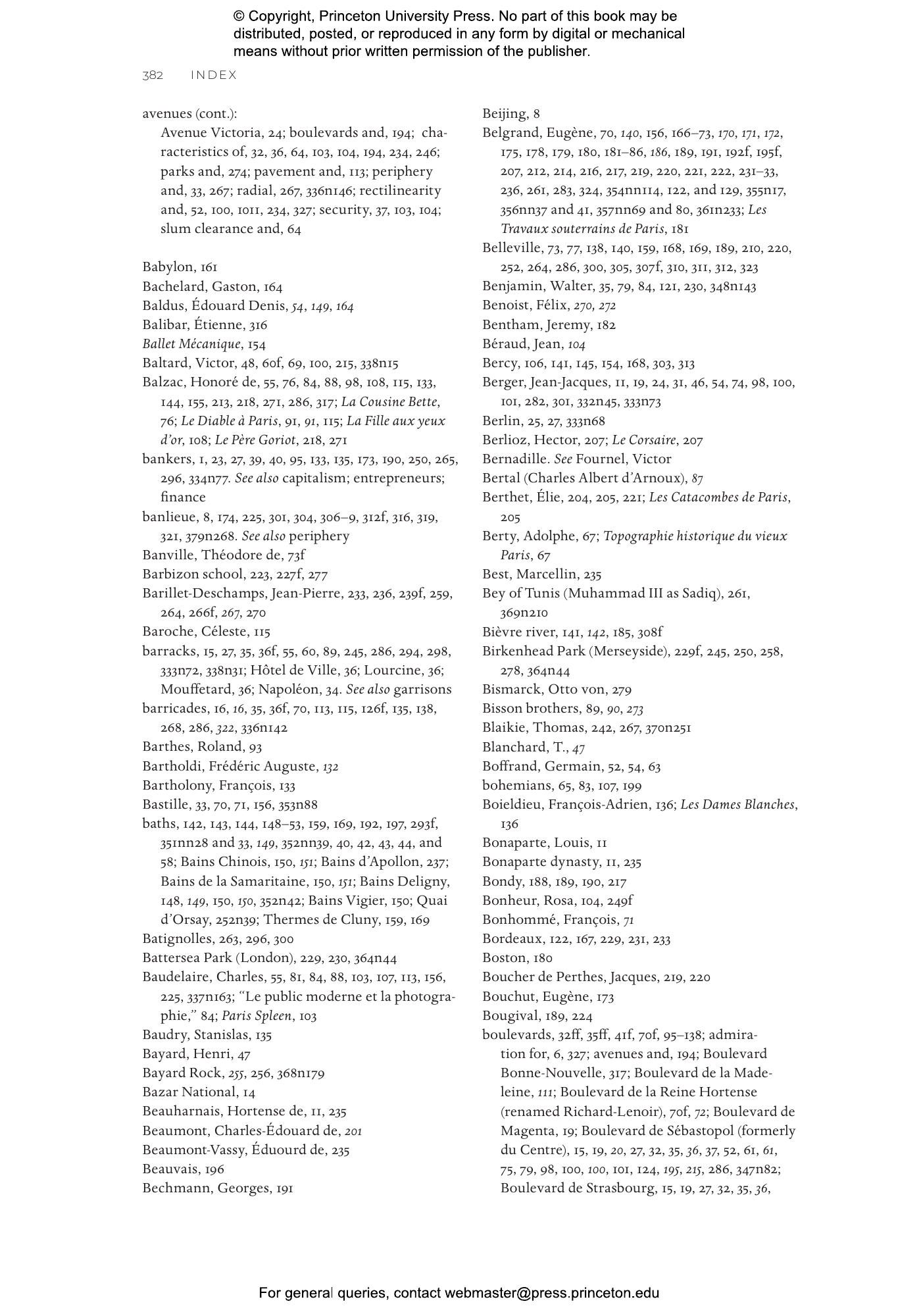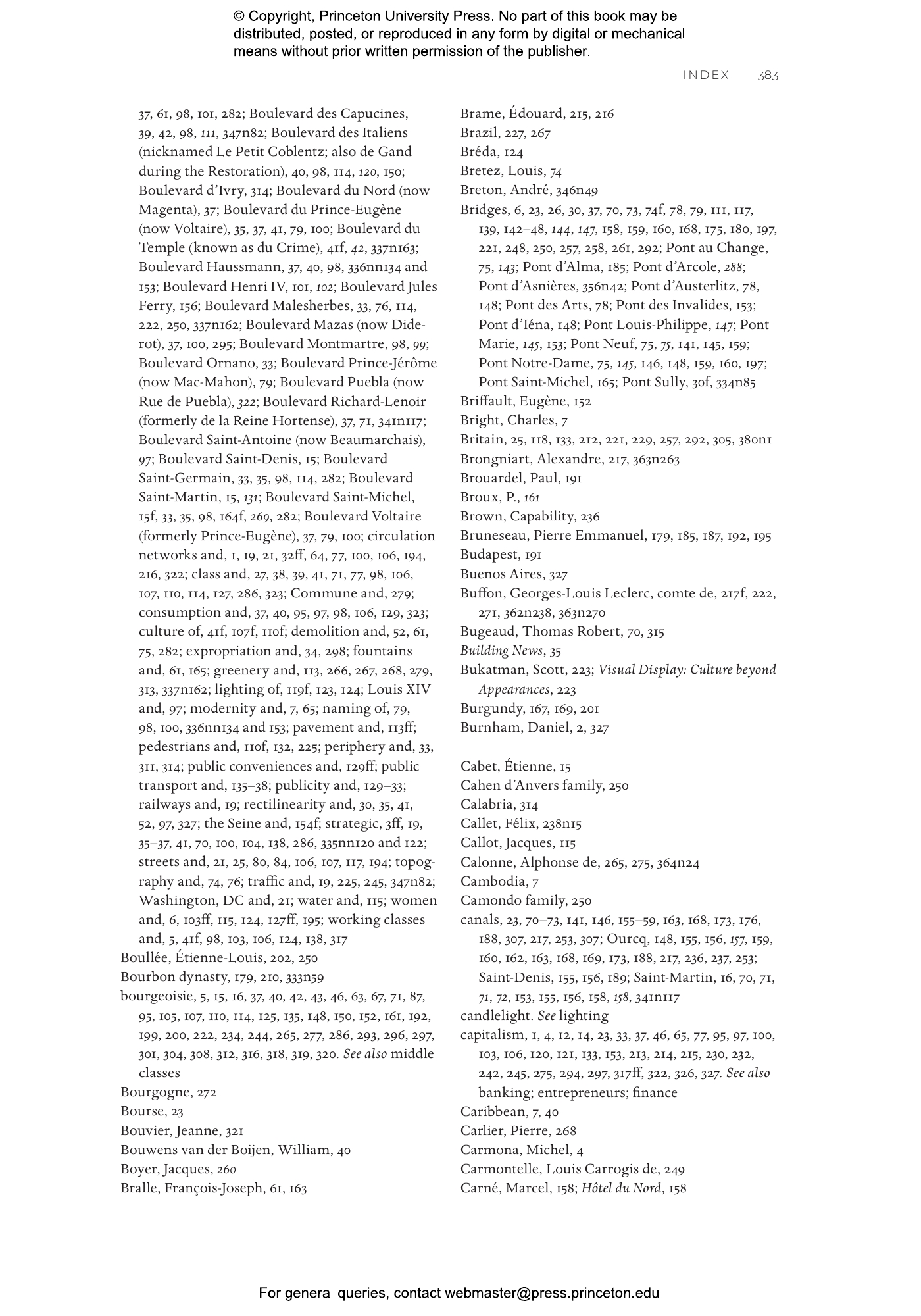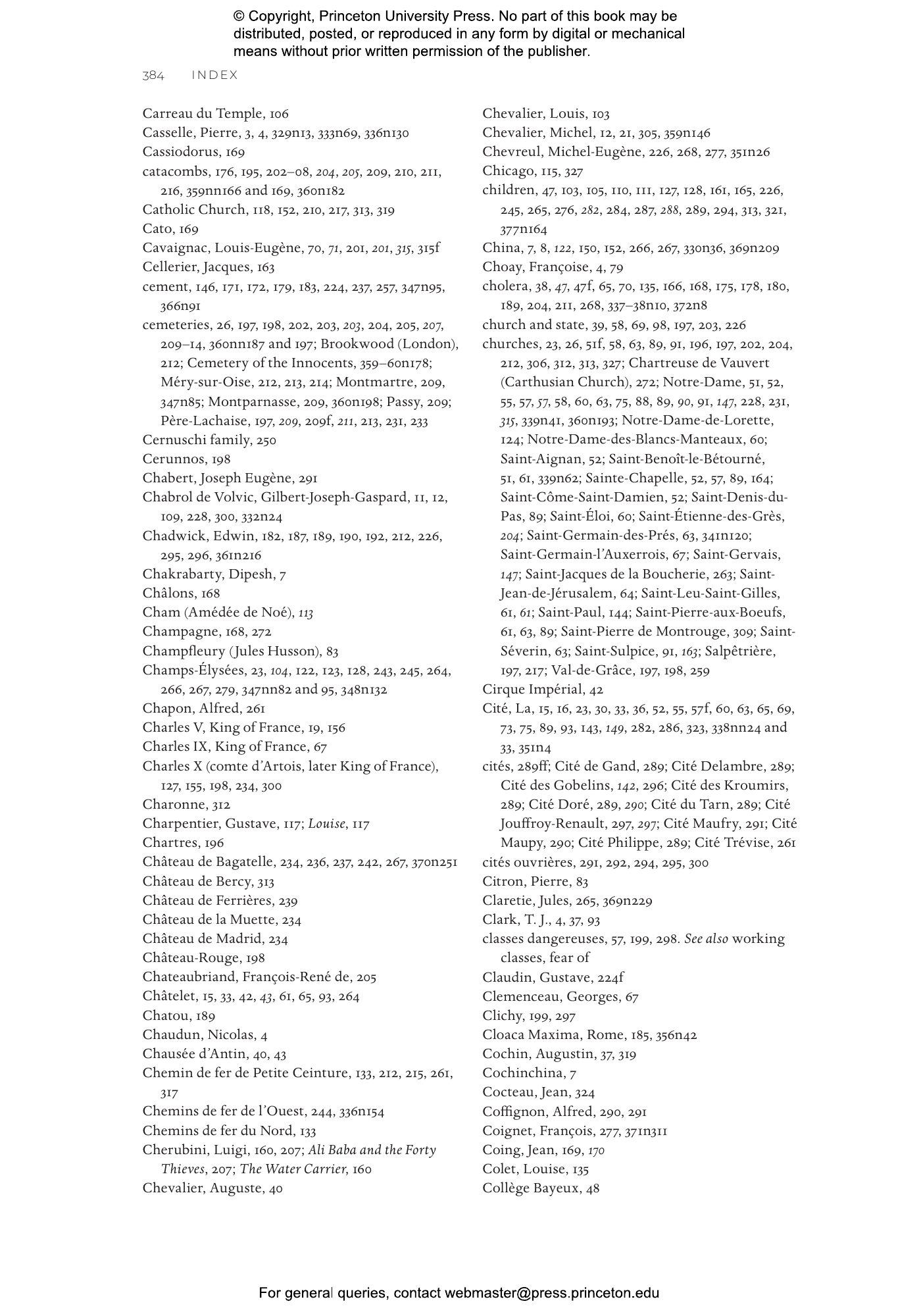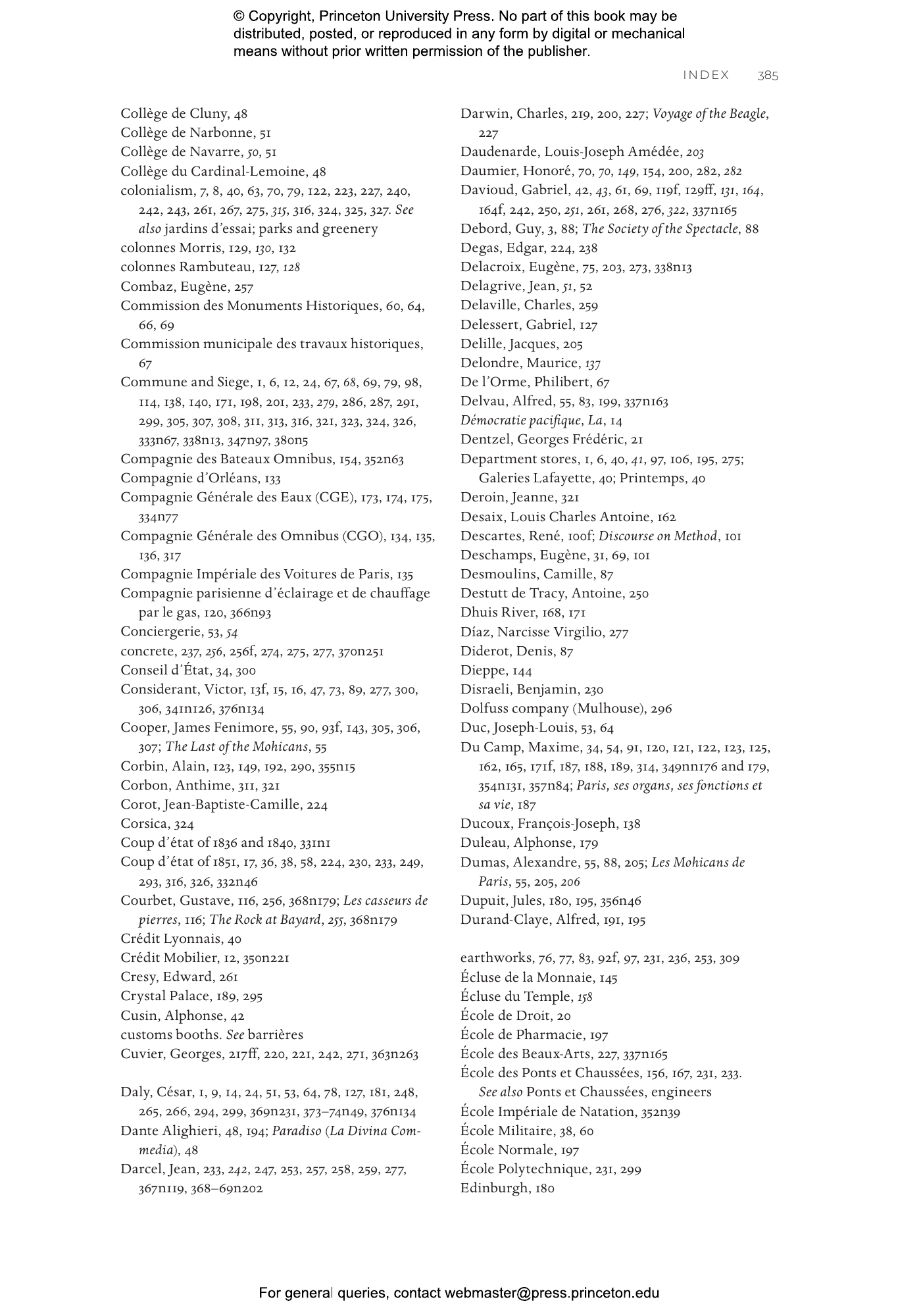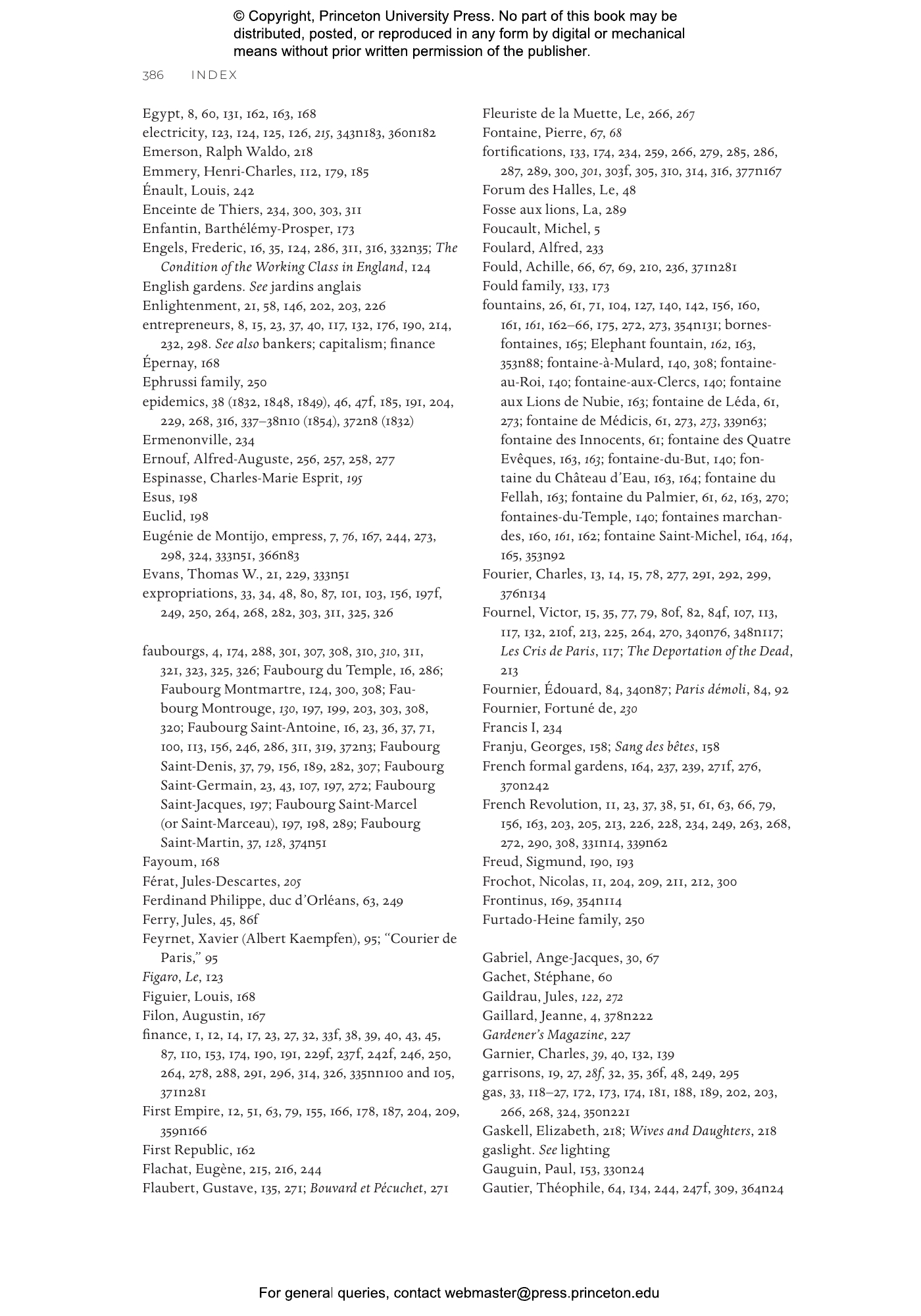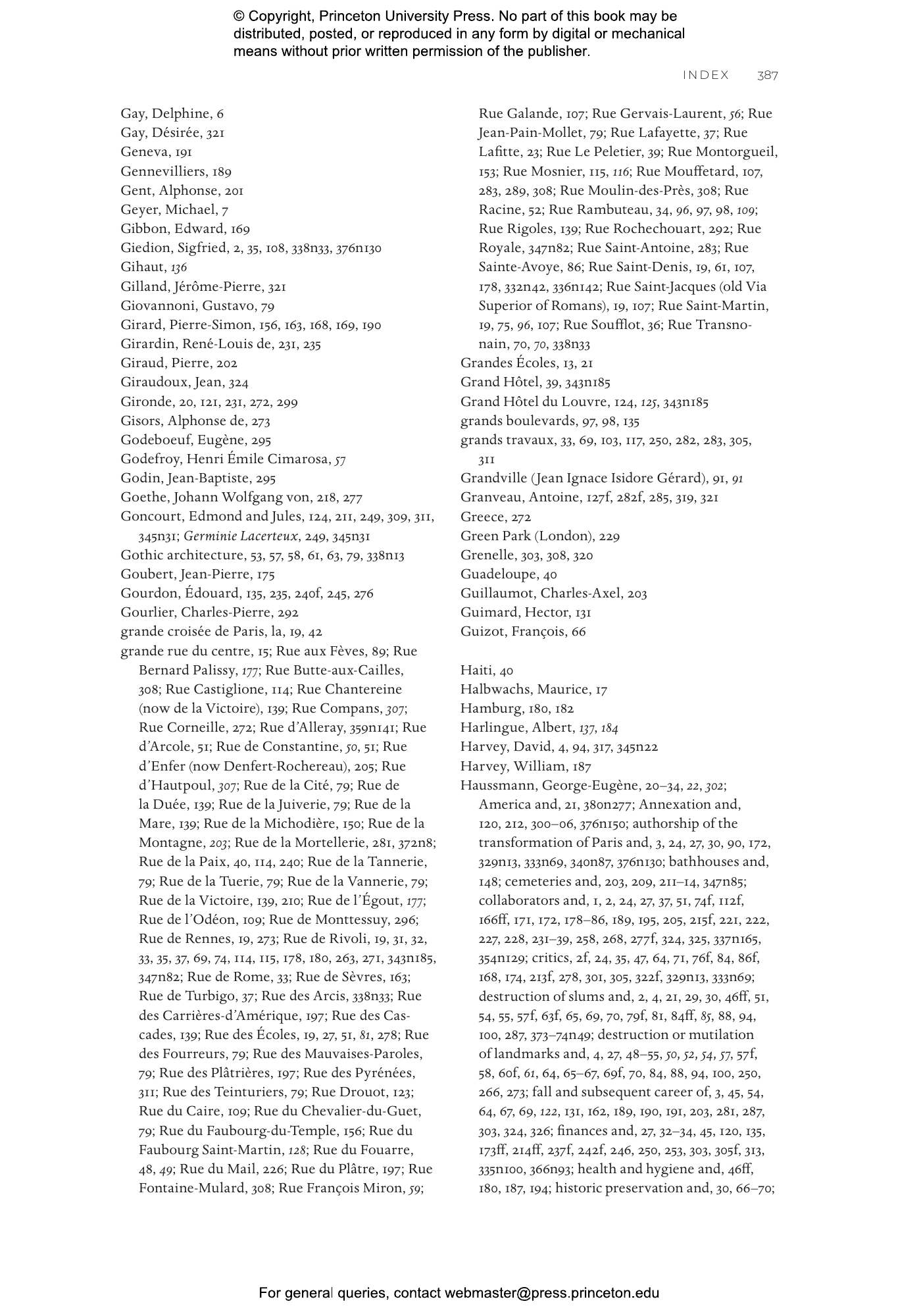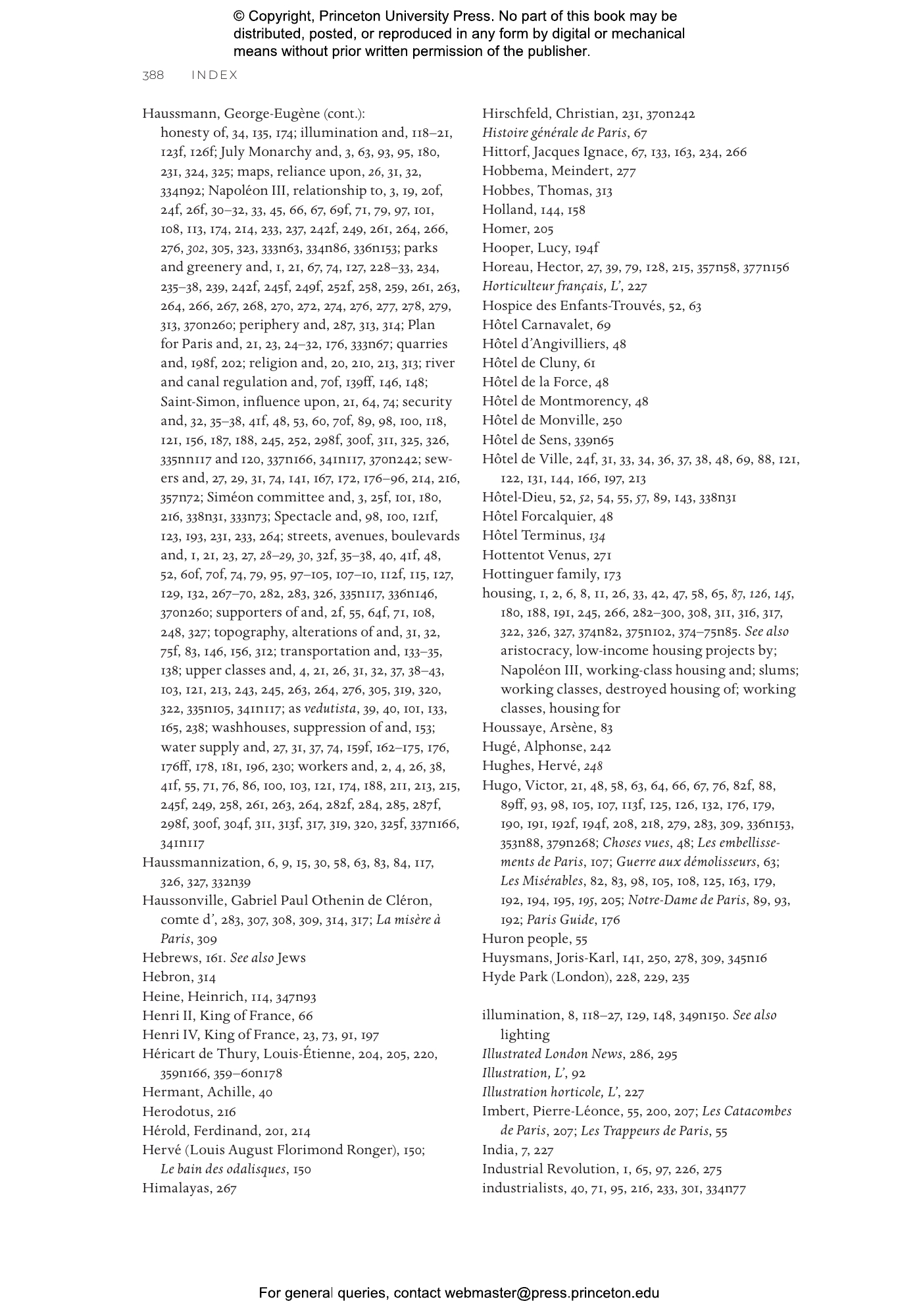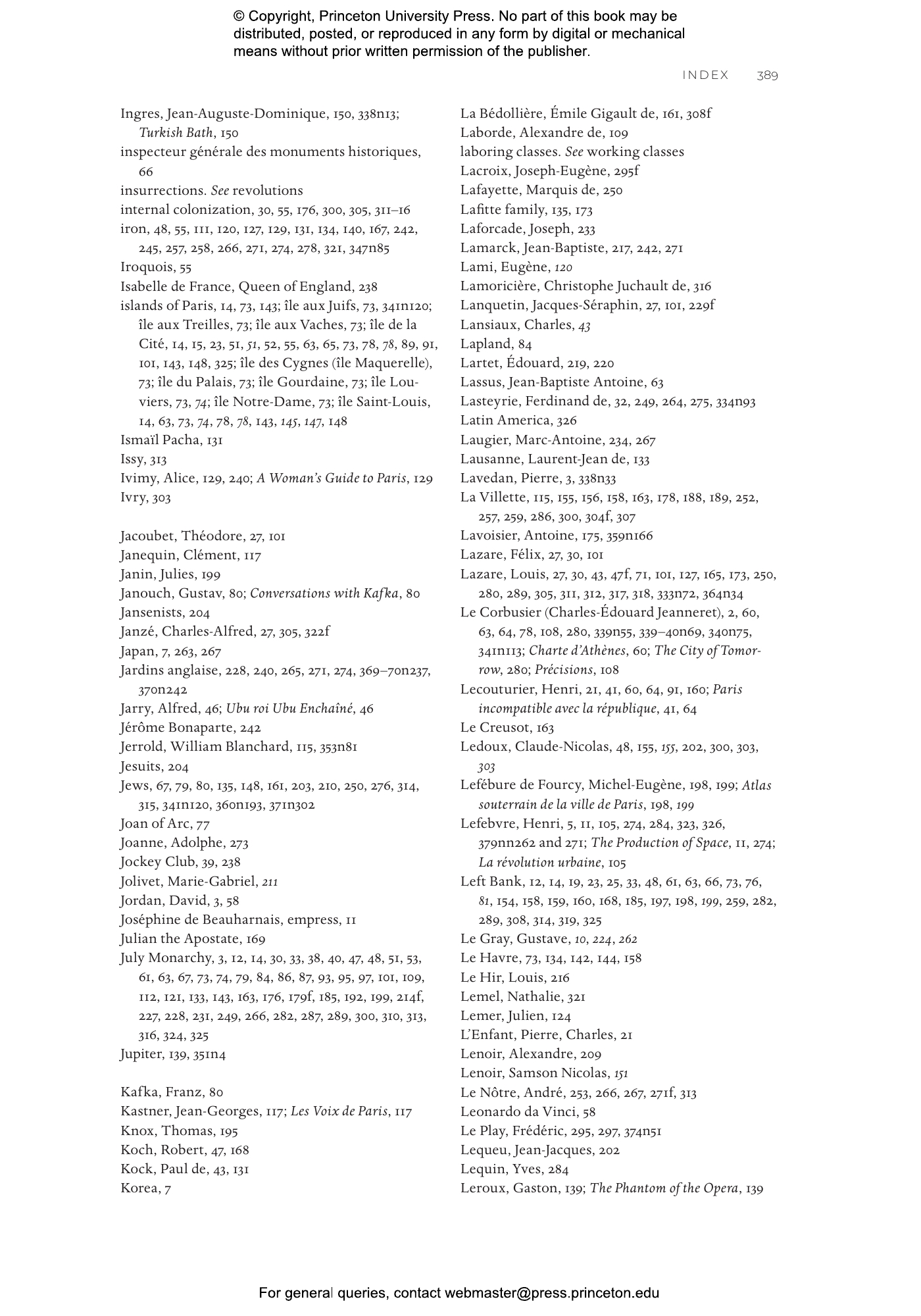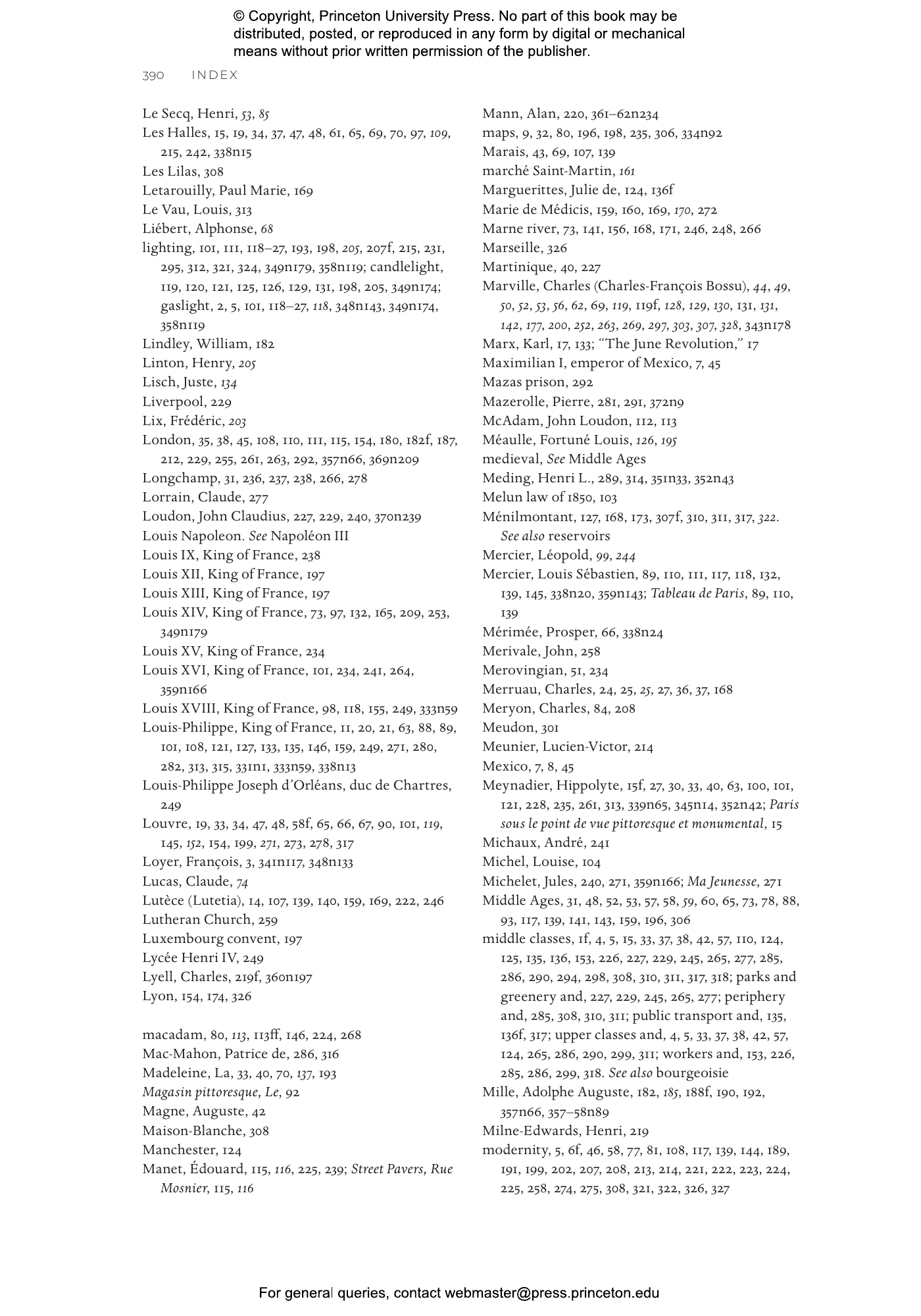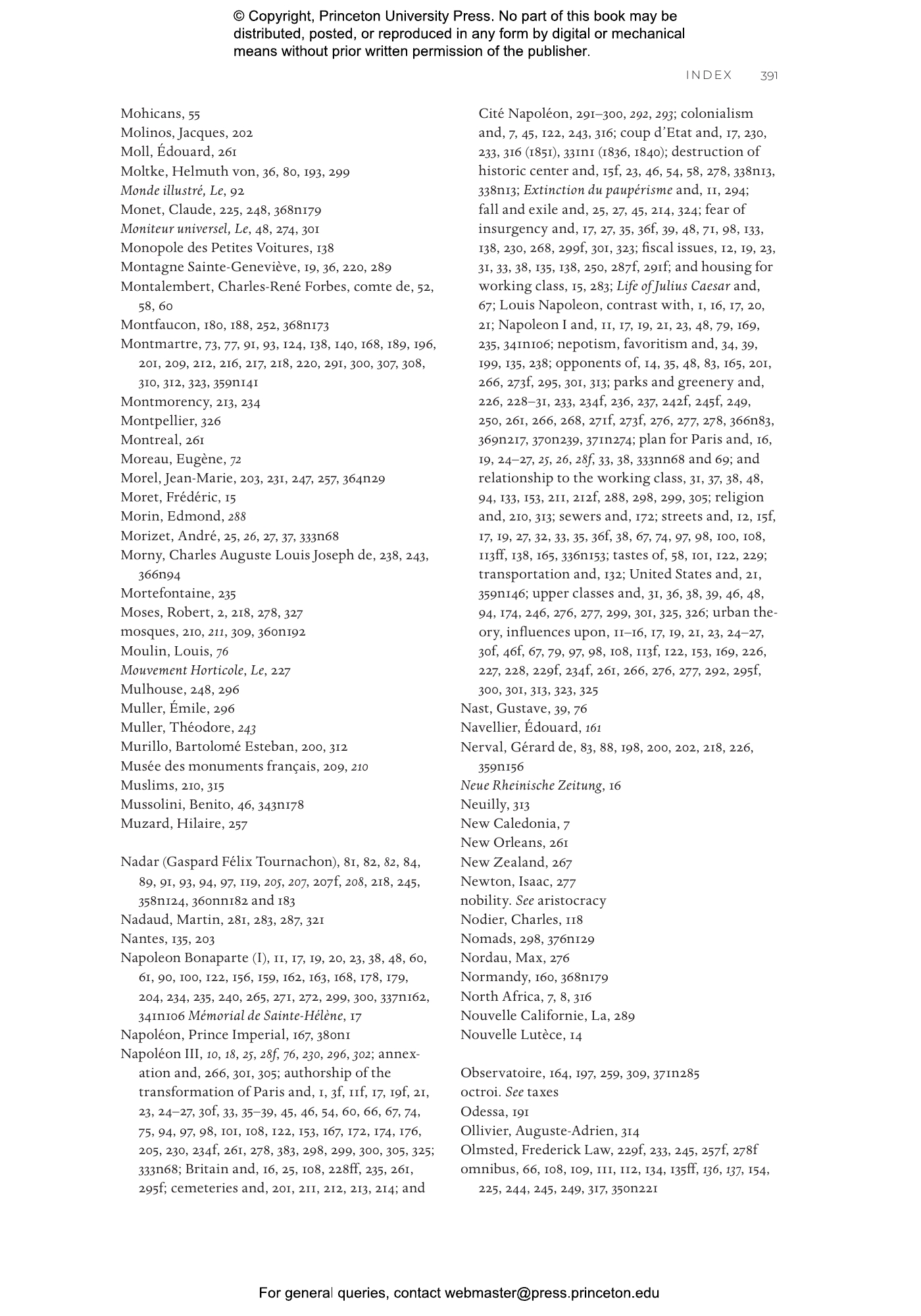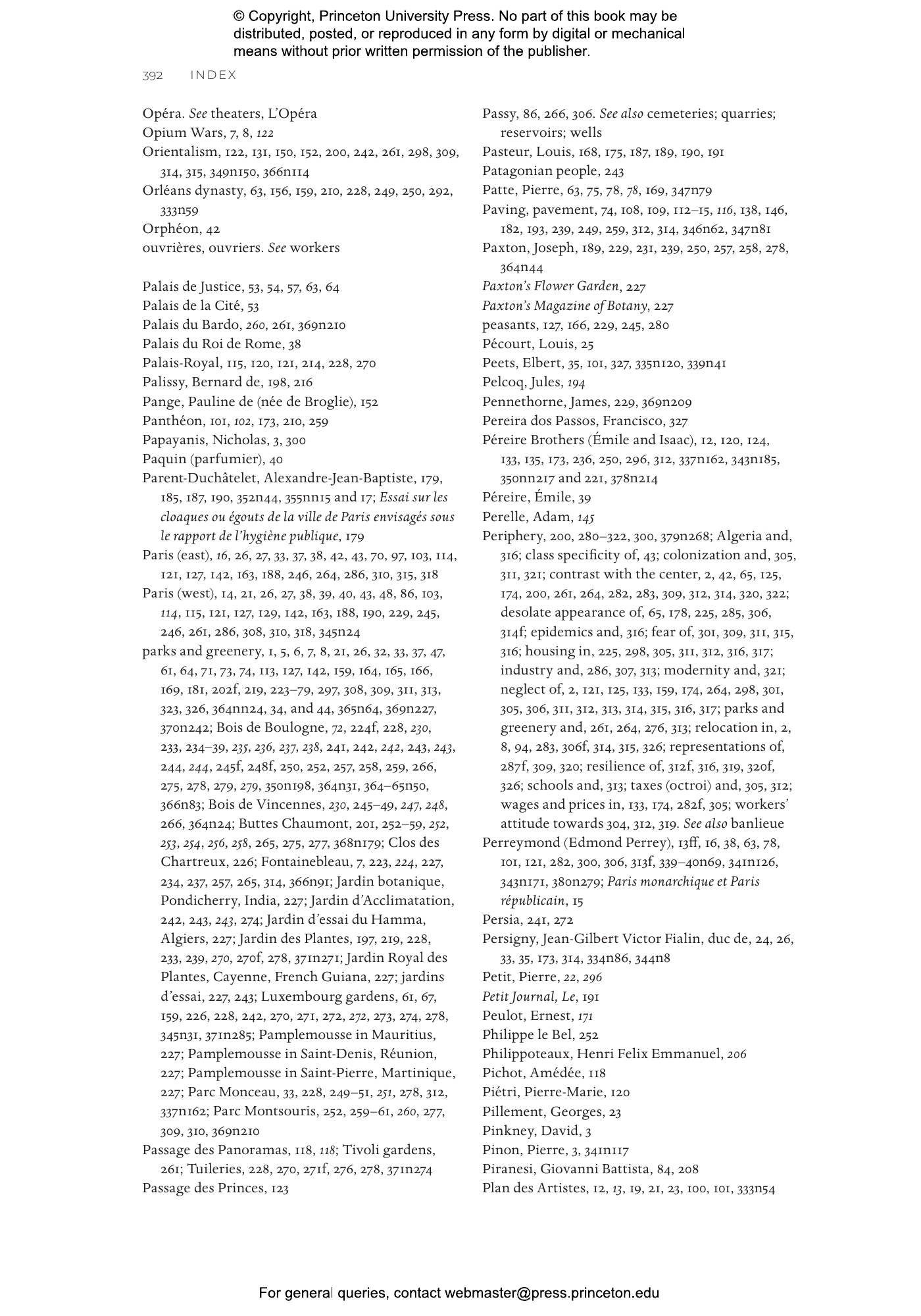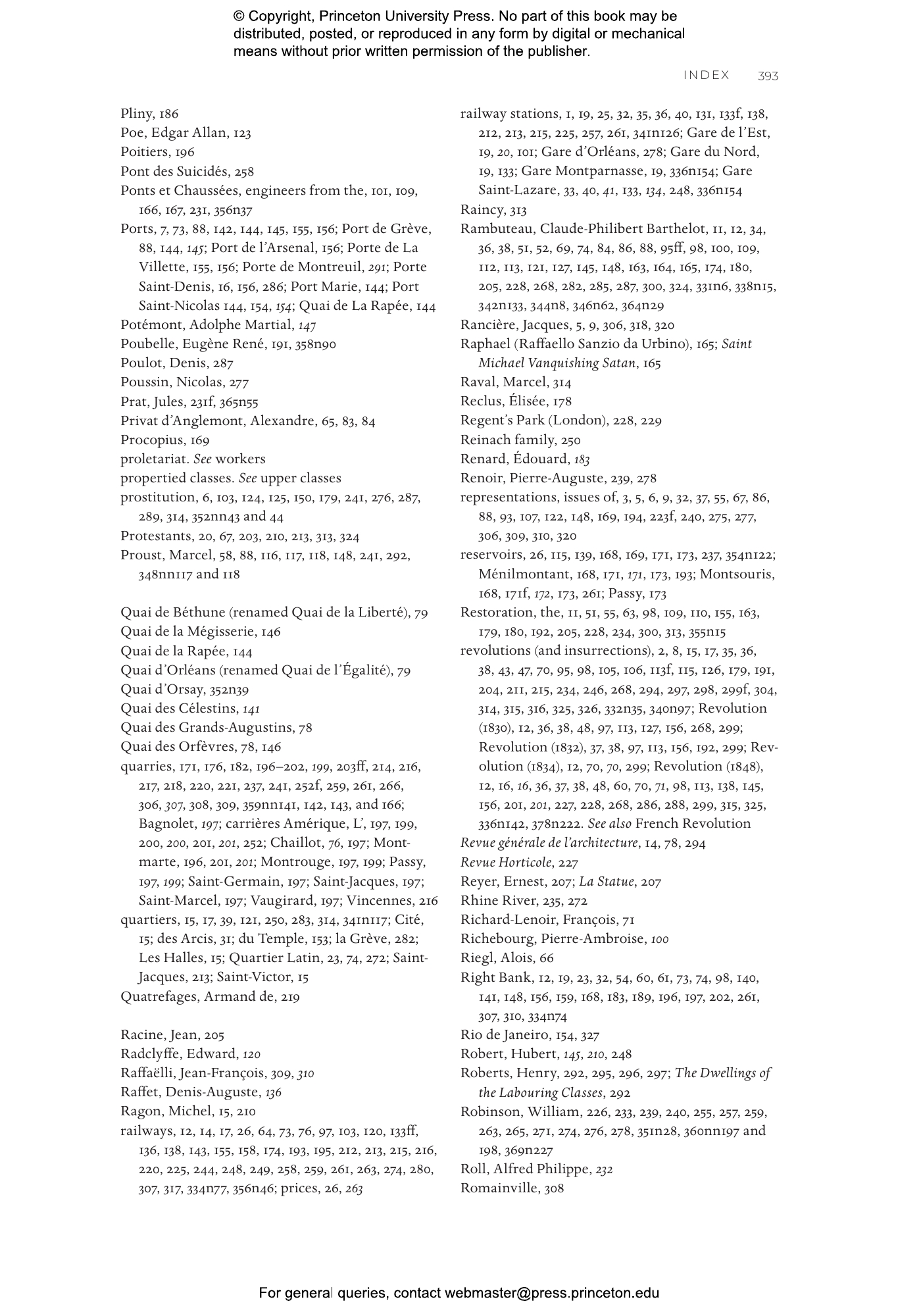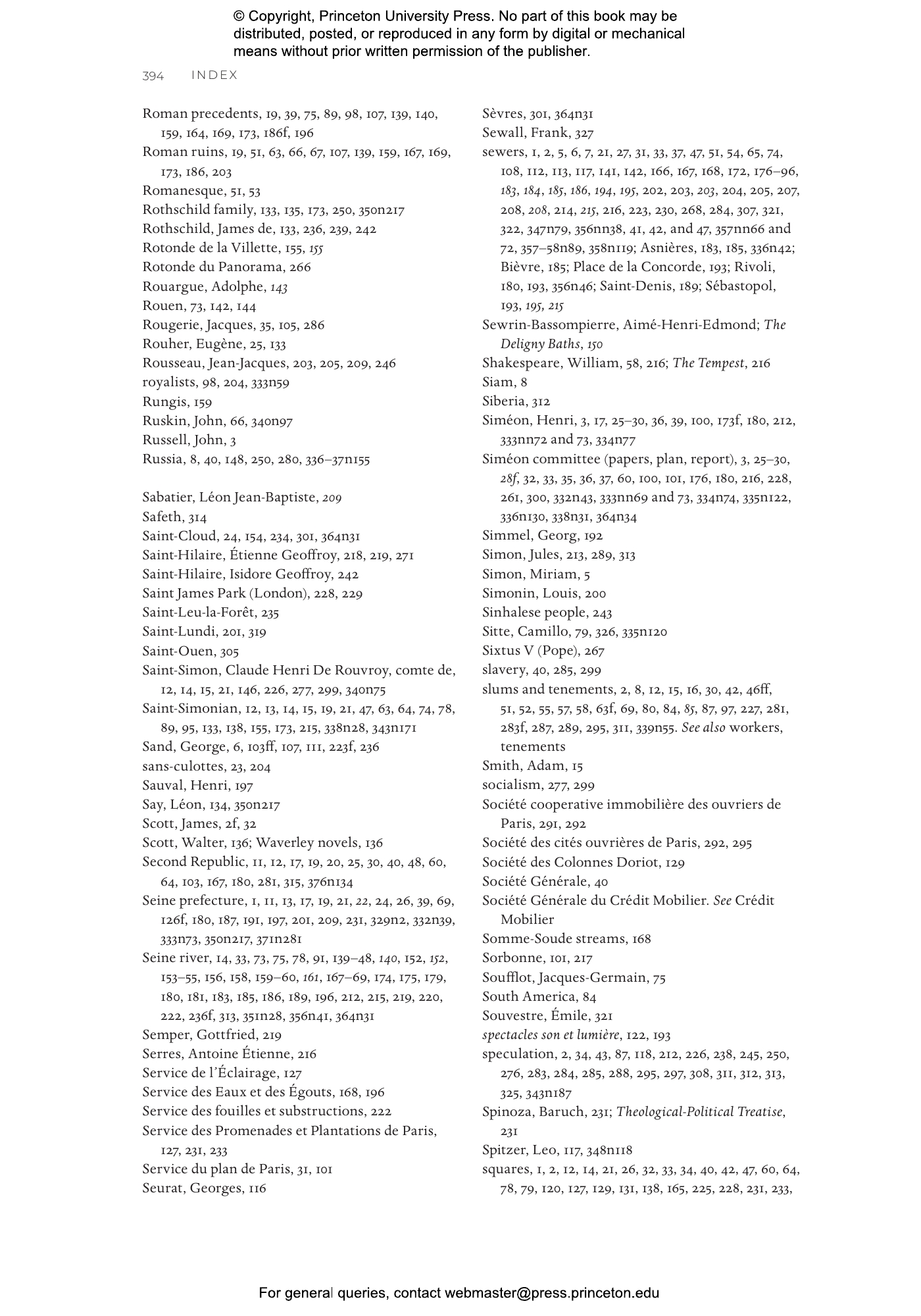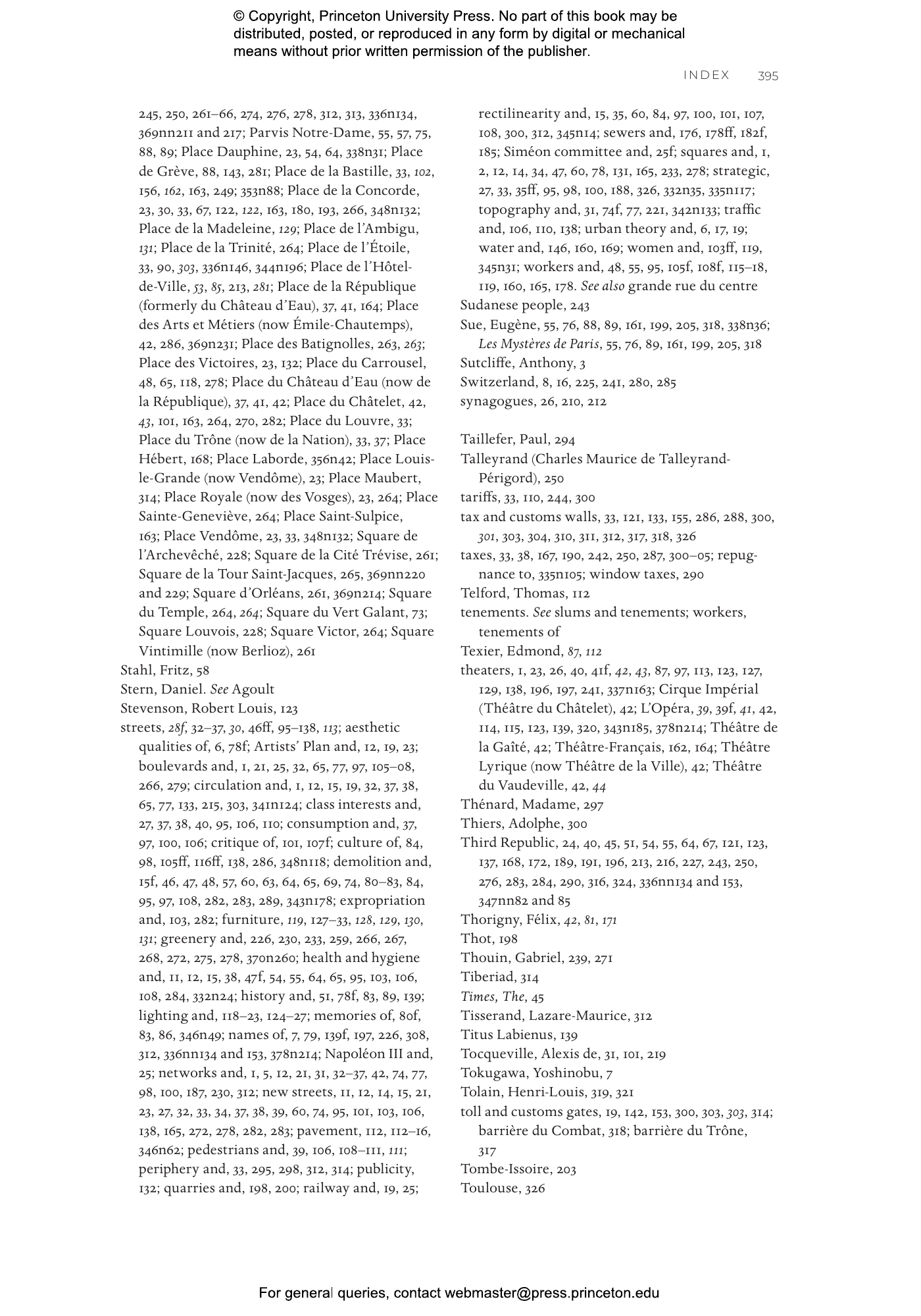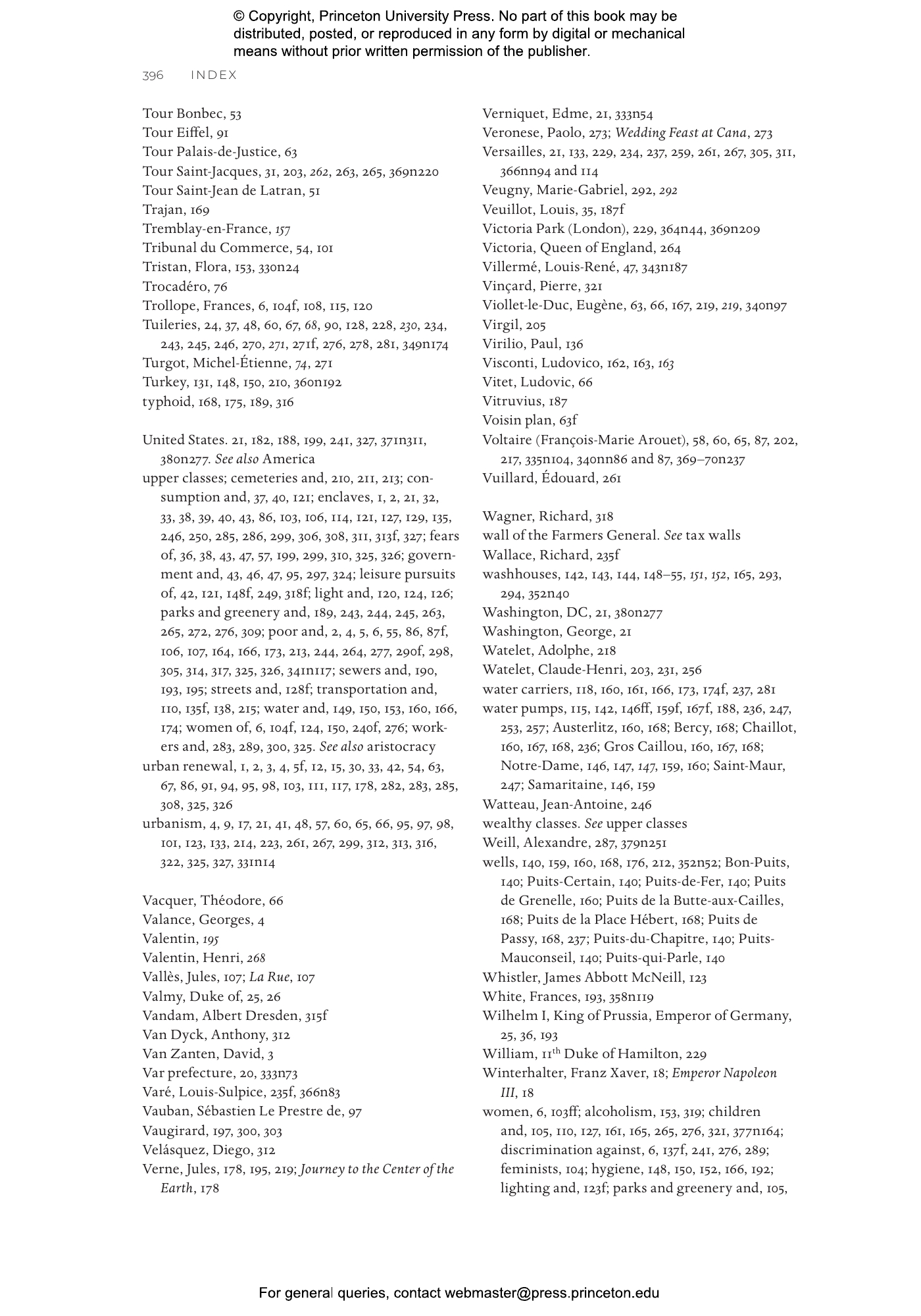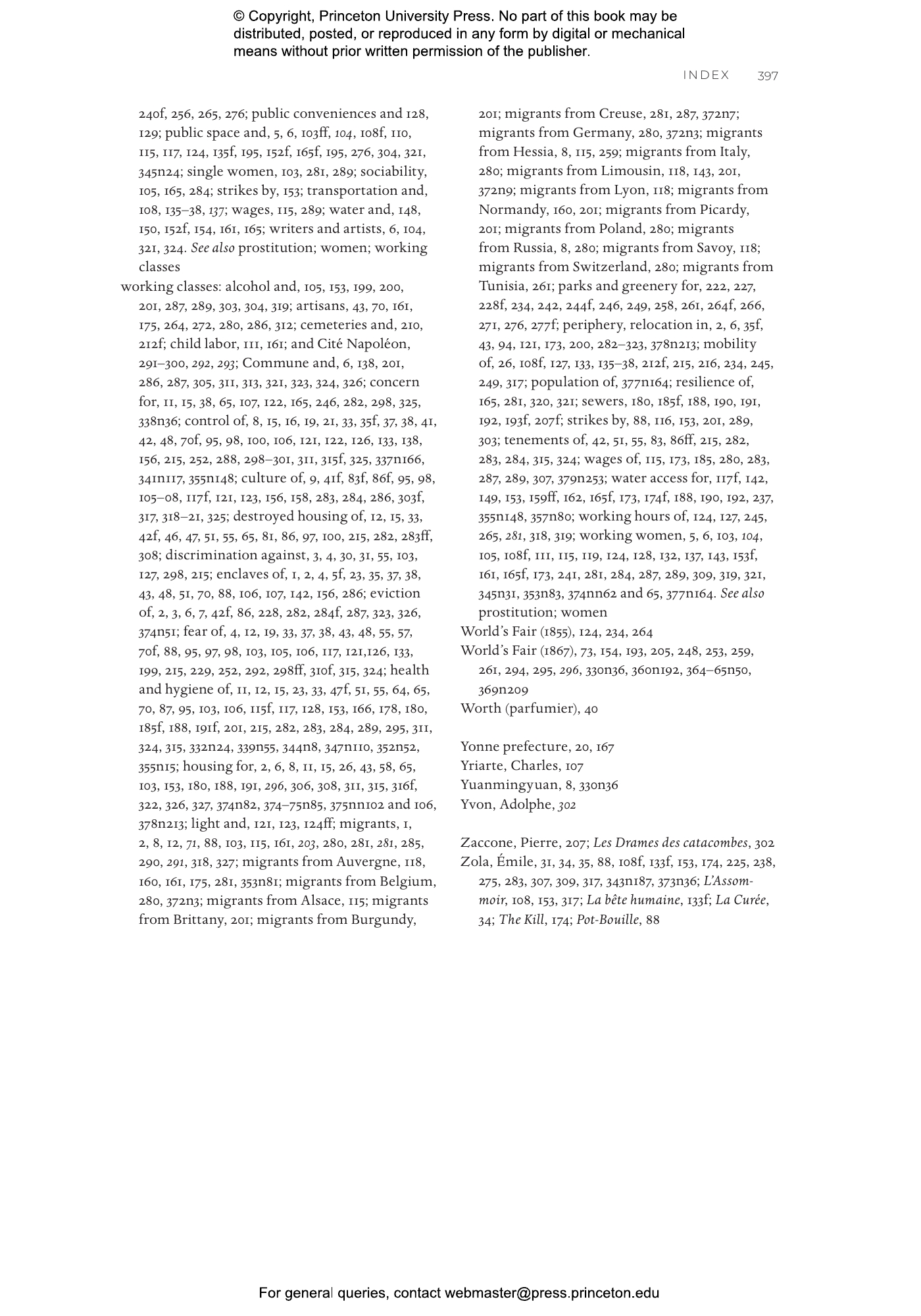Dividing Paris: Urban Renewal and Social Inequality, 1852–1870
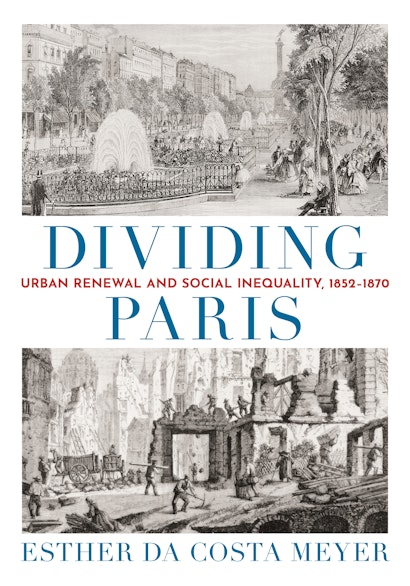

Hardcover
- Price:
- $55.00/£45.00
- ISBN:
- Published:
- Feb 15, 2022
- Copyright:
- 2022
- Pages:
- 416
- Size:
- 7 x 10 in.
- 60 color + 115 b/w illus.
- Main_subject:
- Art & Architecture
ebook
In the mid-nineteenth century, Napoleon III and his prefect, Georges-Eugène Haussmann, adapted Paris to the requirements of industrial capitalism, endowing the old city with elegant boulevards, an enhanced water supply, modern sewers, and public greenery. Esther da Costa Meyer provides a major reassessment of this ambitious project, which resulted in widespread destruction in the historic center, displacing thousands of poor residents and polarizing the urban fabric.
Drawing on newspapers, memoirs, and other archival materials, da Costa Meyer explores how people from different social strata—both women and men—experienced the urban reforms implemented by the Second Empire. As hundreds of tenements were destroyed to make way for upscale apartment buildings, thousands of impoverished residents were forced to the periphery, which lacked the services enjoyed by wealthier parts of the city. Challenging the idea of Paris as the capital of modernity, da Costa Meyer shows how the city was the hub of a sprawling colonial empire extending from the Caribbean to Asia, and exposes the underlying violence that enriched it at the expense of overseas territories.
This marvelously illustrated book brings to light the contributions of those who actually built and maintained the impressive infrastructure of Paris, and reveals the consequences of colonial practices for the city’s cultural, economic, and political life.
Awards and Recognition
- A Choice Outstanding Academic Title of the Year
